When it comes to the transportation of goods, understanding the specifications of trailers, particularly the weight of a 40ft 5th wheel flatbed trailer, is crucial. This article dives deep into the nuances of flatbed trailers, providing detailed insights that will help manufacturers, transporters, and end-users make informed decisions.
What is a 40ft 5th Wheel Flatbed Trailer?
A 40ft 5th wheel flatbed trailer is a trailer designed for heavy-duty hauling that utilizes a 5th wheel hitch, offering superior stability and weight distribution compared to conventional hitch systems. This design is particularly beneficial for transporting large items, such as machinery, vehicles, or construction materials.
Dimensions and Weight Classification
Table 1 below outlines the general dimensions and weight classification of a typical 40ft 5th wheel flatbed trailer:
| Dimension | Measurement |
|---|---|
| Length | 40 feet |
| Width | 8.5 feet |
| Height | 5 – 6 feet |
| Average Weight | 10,000 – 15,000 lbs |
| Payload Capacity | 30,000 – 40,000 lbs |
Note: The weight can vary based on trailer design, materials used, and added features like toolboxes or side rails.
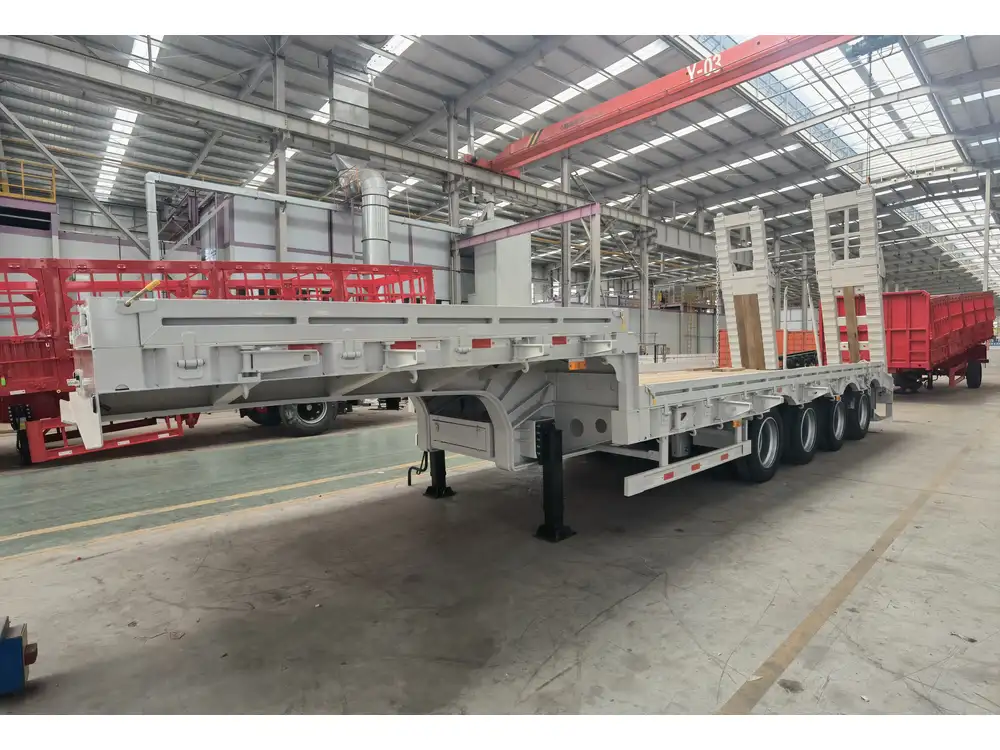
Weight Factors of a 40ft 5th Wheel Flatbed Trailer
The weight of a 40ft 5th wheel flatbed trailer can significantly impact its performance and usability. Below are the primary factors influencing the overall weight:
Materials Used in Construction
The choice of materials can lead to significant variances in weight. Common materials include:
- Steel: Heavy but incredibly durable, making it ideal for rugged conditions.
- Aluminum: Lightweight with high corrosion resistance, though generally less durable than steel.
- Composite Materials: Emerging technologies offer lighter options with comparable strength.
Design Features
The design features of the trailer can also impact weight. Variations can include:
- Number of Axles: More axles can distribute weight better but also add to the overall weight.
- Deck Type: A wood deck may weigh less than a steel one, providing flexibility in weight distribution.
- Side Rails and Toolboxes: Additional features can lead to a substantial increase in weight.
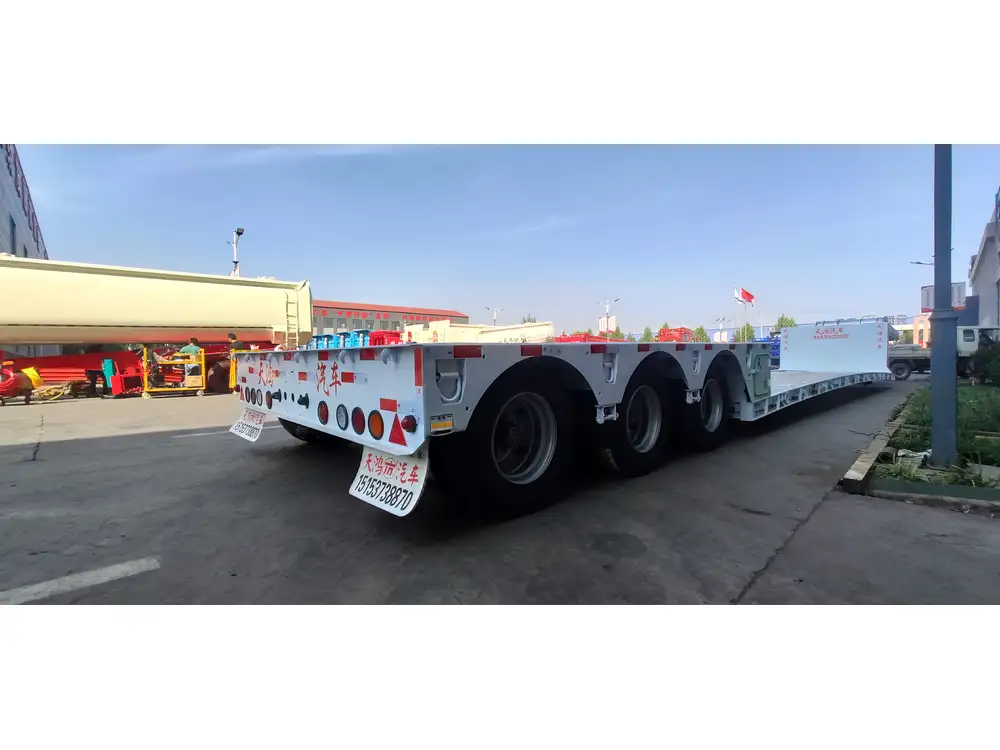
Load Distribution
Understanding how to distribute weight effectively across the trailer is essential. Improper load distribution can lead to safety hazards, including tipping or detachment during transit.
Calculating the Weight of a 40ft 5th Wheel Flatbed Trailer
To calculate the weight, it’s generally advisable to consider:
- Trailer’s Weight (Empty): Acquiring the weight of the trailer when it is not loaded.
- Weight of the Load: Add the total weight of the goods being transported.
Example Calculation
Let’s consider the empty weight of a 40ft flatbed trailer is approximately 12,000 lbs and the load being transported is 20,000 lbs:
Total Weight Calculation:
[ \text{Total Weight} = \text{Empty Trailer Weight} + \text{Load Weight} ] [ \text{Total Weight} = 12,000 \text{ lbs} + 20,000 \text{ lbs} = 32,000 \text{ lbs} ]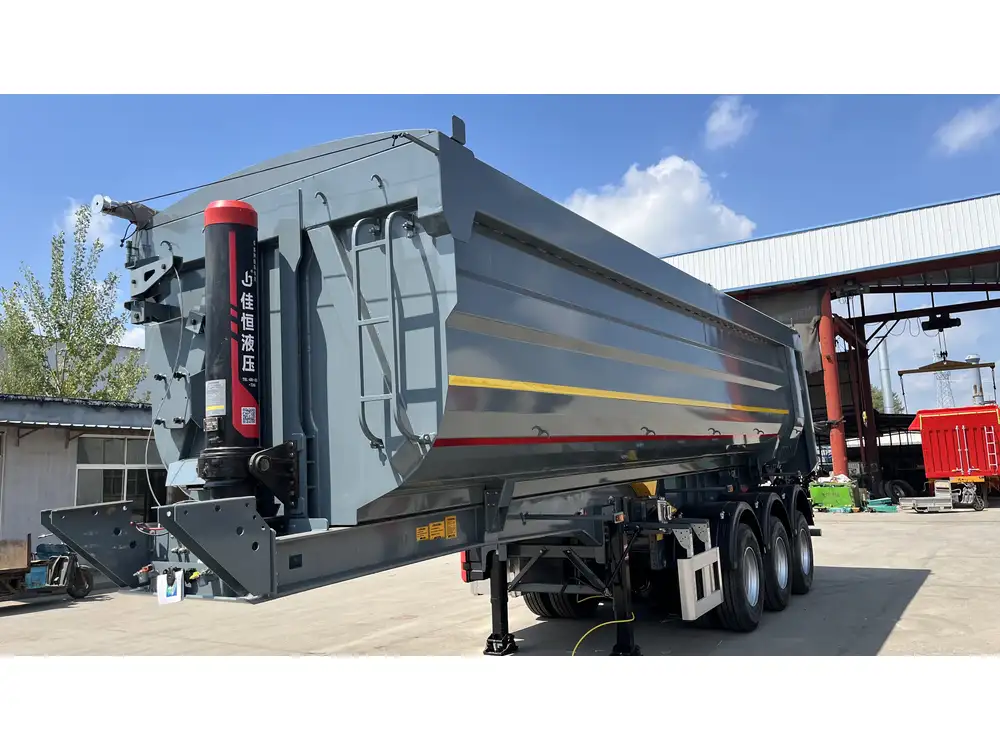
Regulations and Compliance Regarding Weight
Transportation regulations can vary by region but generally follow principles governed by state and federal laws.
Weight Limits
- Federal Limits: Most states adhere to the Federal Bridge Formula, which enforces weight limits based on the number of axles and spacing.
- State Variability: Local jurisdictions may impose additional restrictions, so it’s essential to review local laws to ensure compliance.
Performance Implications of Weight
Understanding the implications of the trailer’s weight on performance is crucial for efficiency in transportation.
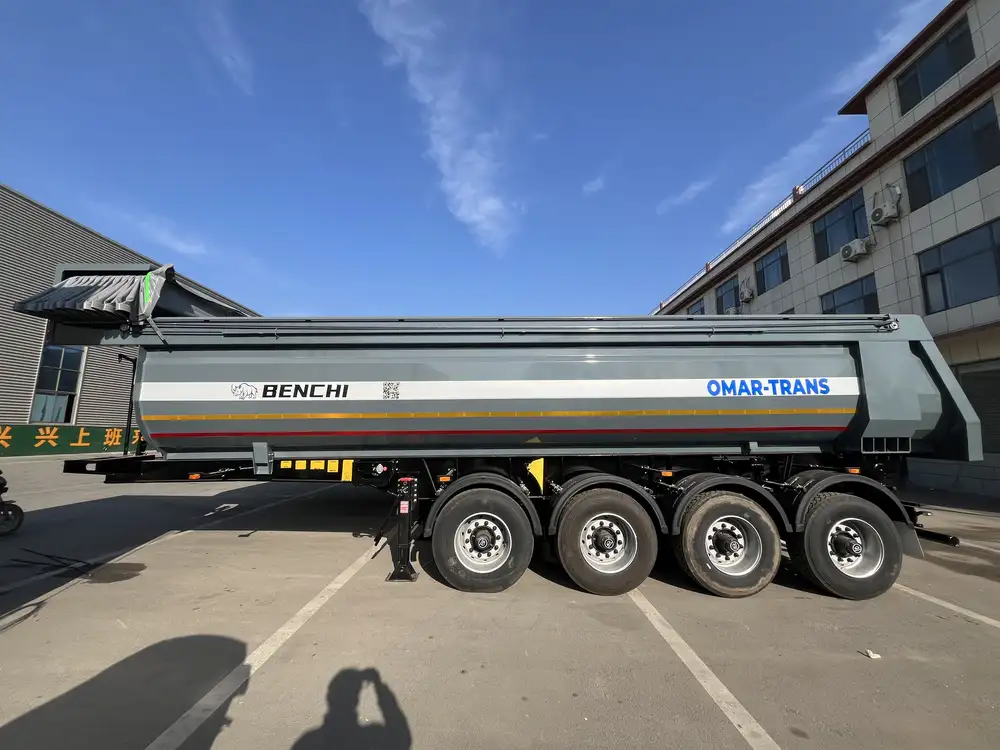
Towing Capacity
The weight of the trailer significantly affects the towing vehicle’s:
- Fuel Efficiency: Heavier loads will generally lead to lower fuel efficiency.
- Braking Distance: The greater the weight, the longer the stopping distance, necessitating a vehicle capable of handling the added load.
- Wear and Tear: Overloading a vehicle can accelerate maintenance needs, leading to increased operational costs.
Safety Considerations
The safety of a 40ft 5th wheel flatbed trailer plays a vital role in ensuring secure transportation:
- Stability Risk: Greater weights can lower stability, increasing the risk of swaying or jackknifing.
- Regulatory Compliance: Adhering to weight regulations is not only a legal obligation but also critical for safety.
Choosing the Right 40ft Flatbed Trailer
Purchasing the correct trailer type for specific needs requires careful consideration.
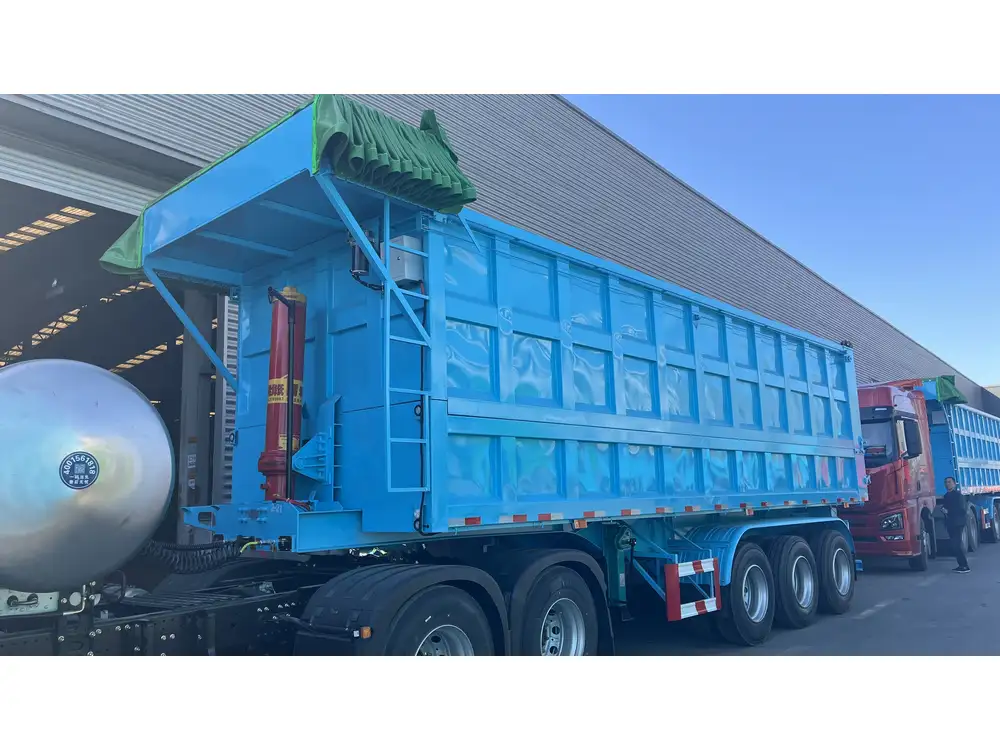
Factors to Consider
- Load Type: Assess the type of loads needing transport—heavy machinery may necessitate a different structure compared to pallets of goods.
- Frequency of Use: High-frequency use might lean towards utilizing more durable but potentially heavier options.
- Budget: Balance upfront costs with maintenance and operational expenses.
Comparison Chart
The following chart provides a quick comparison between different trailer types, including their usages, average weight, and pros and cons.
| Trailer Type | Average Weight | Pros | Cons |
|---|---|---|---|
| Flatbed Trailer | 10,000 – 15,000 lbs | Versatile, easy to load/unload | Exposed loads can be susceptible to weather |
| Enclosed Trailer | 7,000 – 12,000 lbs | Protects cargo from elements | Limited height and load capacity |
| Step Deck Trailer | 15,000 – 25,000 lbs | Lower deck height for loading | Heavier overall structure |
Maintenance of a 40ft 5th Wheel Flatbed Trailer
Regular maintenance is essential in prolonging the lifespan and ensuring safety while operating a trailer.
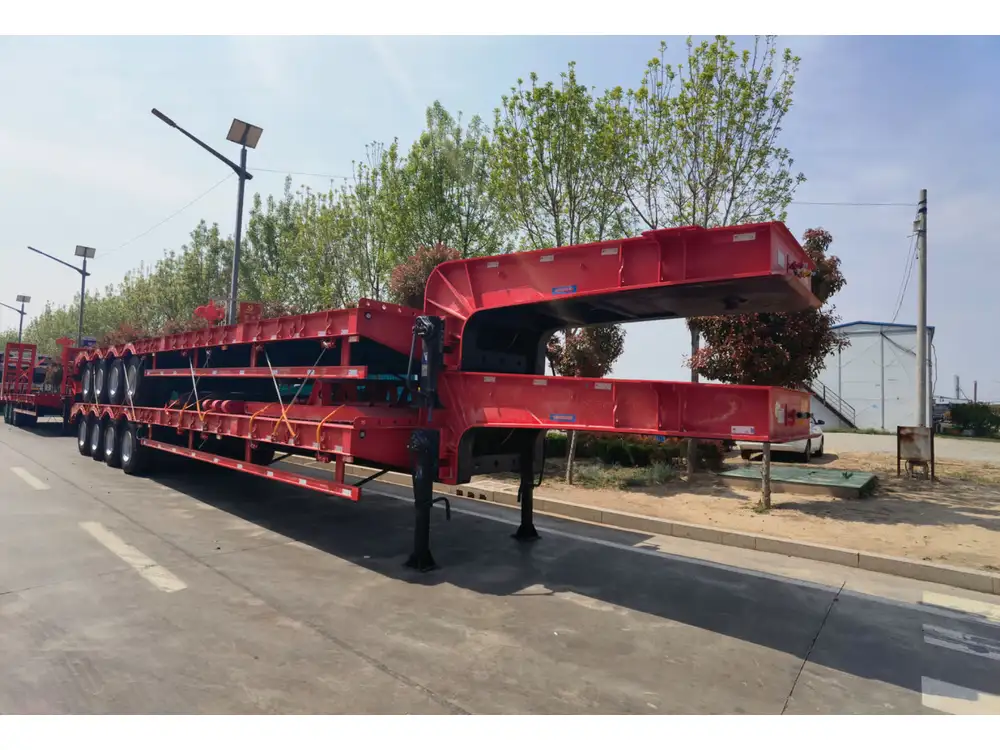
Routine Maintenance Checklist
- Inspect Tires and Brakes regularly: A vital factor for ensuring towing safety.
- Lubricate moving parts: Reduces friction, ensuring smoother operation.
- Check for Structural Integrity: Periodic visual inspections can identify potential weak points.
Repair Options
- Professional Repair Services: While this can be more costly, professional servicing ensures issues are addressed comprehensively.
- DIY Repairs: Minor repairs can be undertaken by knowledgeable individuals, although caution should be exercised to prevent exacerbating issues.
Conclusion: Weighing Your Options for the 40ft 5th Wheel Flatbed Trailer
The weight of a 40ft 5th wheel flatbed trailer encapsulates various factors, from construction materials and design to regulations and performance implications. Understanding these elements is critical for making informed decisions that maximize transportation efficiency while ensuring compliance with safety protocols.
As we navigate the complexities of logistics and transportation, careful consideration of the specifications, features, and maintenance needs of flatbed trailers will lead to greater success in operations. Shifting focus from merely calculating weights to understanding their implications provides a holistic approach to shipping logistics—a fundamental aspect of thriving in an increasingly competitive marketplace.
In summation, whether you are a manufacturer, transporter, or end-user, understanding the weight dynamics of a 40ft 5th wheel flatbed trailer offers not only enhanced efficiency but ensures compliance with various regulations, ultimately contributing to safer and more effective transportation practices.



